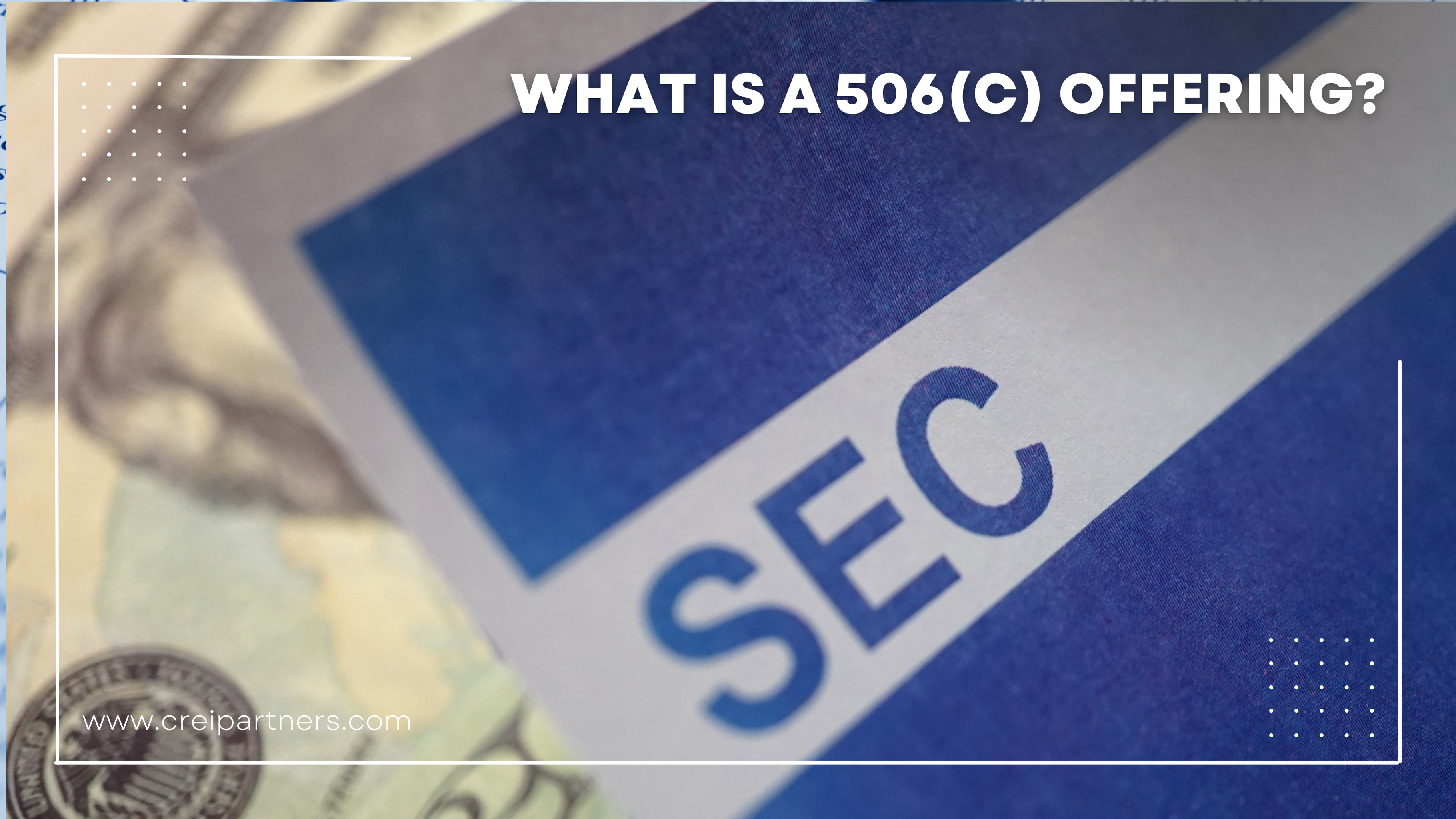In the past, one of the primary ways private companies raised funds for real estate investing was through Rule 506 of Regulation D. Regulation D is an exemption from registering securities with the Securities and Exchange Commission (SEC). When Title II of the Jump Start Our Business Startups (JOBS) Act took effect in September 2013, Rule 506 of Regulation D was split into 2 separate exemptions, 506(b) and 506(c) offerings.
The 506(c) plan permits issuers to solicit and advertise an offering, similar to crowdfunding with restrictions. Purchasers must be accredited investors. Issuers must take steps to verify purchasers “accredited investor status” and determine they meet other conditions in Regulation D. An accredited investor is an individual who qualifies to invest in real estate syndications by satisfying one of the following requirements: an annual income of $200,000—or $300,000 for joint income—or a net worth of at least $1 million (not including primary residence). In addition, there are other categories of accredited investors that recently were updated and provided great news for those who do not meet the income criteria. Click here for a separate blog on those changes.
Some benefits to 506(c) offerings:
- Businesses have more flexibility in raising capital. They are permitted to publicly advertise in a cost-effective manner.
- Business are permitted to use social media and other advertising techniques reaching a much broader group of investors.
- Businesses have the freedom in making disclosures to investors which can enhance an investors interest in investing, likely to solidify more deals for the business owner.
- Financial statements produced by the business for investors do not need to be reviewed or audited by an independent accountant. Making for less steps and an easier deal.
- No limit to the amount of capital that can be raised.
- The issuer or broker-dealer has to verify the accreditation status of the investor. Accreditation is achieved by either proving the investor has a net worth of $1,000,000 not including primary residence; by proving that the investor has made $200,000 a year over the past 2 years, with a reasonable prediction to make that again this year; or by a letter of accreditation by a CPA, attorney, or other professional. So thorough background checks ensure a safe deal for the issuer.
- No document disclosure requirements because all investors must be accredited and theoretically should know the right questions to ask before they invest, making it easier to manage the deal.
- No waiting period requirement as with the 506(b) plan.
Now that we’ve covered what the 506(c) plan is and its benefits, let’s take a look at the three main differences between the 506(b) and 506(c) plans:
- 506(b) markets directly to deal sponsors network without general or internet solicitation. This is not an issue with 506(c), the possibilities for investors are endless.
- 506(b) only up to 35 non-accredited investors are permitted to invest and no limits on accredited investors. 506(c) only accredited investors that show they understand the investment may invest.
- 506(b) accredited investors typically self-certify while 506(c) issuers rely on various methods to verify accredited status.
Like everything else, the investment arena is always evolving. These days there are more options to raising capital than ever before. While learning out private investment opportunities, it is critical to understand the differences between 506(b) and 506(c) offerings. The key is knowing all your options, do your research and find what is best for you personally and professionally.
Additional Resources:
Great News for Future Accredited Investors


 Subscribe to our newsletter so you never miss out on new investment opportunities, podcasts, blogs, news and events.
Subscribe to our newsletter so you never miss out on new investment opportunities, podcasts, blogs, news and events.